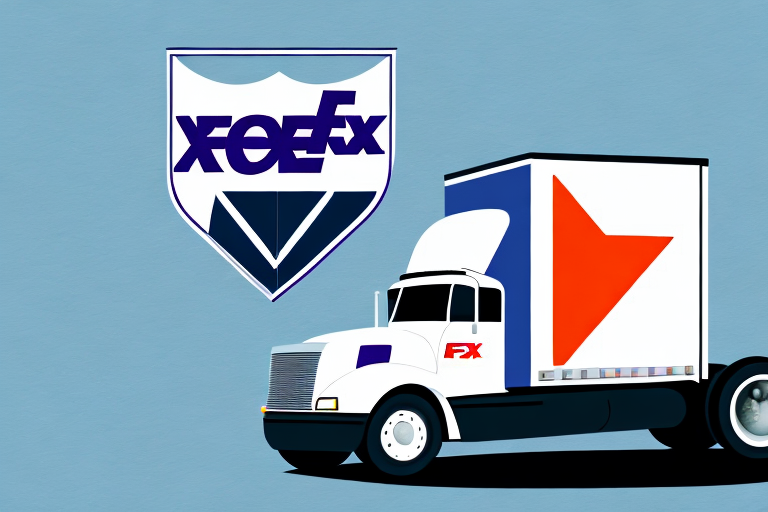Understanding FedEx Shipping Rates from 37211 to 66217
Shipping a package from zip code 37211 to 66217 requires understanding how FedEx determines their shipping rates. This comprehensive guide explores the factors influencing FedEx shipping costs, methods to calculate them accurately, and strategies to save on shipping expenses.
How to Calculate FedEx Shipping Rates
FedEx shipping rates are determined by several factors, including:
- Distance: The distance between the origin (37211) and destination (66217) zip codes.
- Package Weight and Dimensions: Heavier and larger packages incur higher shipping costs.
- Shipping Speed: Options range from standard ground shipping to expedited express services.
- Additional Services: Services such as signature confirmation, insurance, and special handling may increase the rate.
To calculate your FedEx shipping rate, you can use the FedEx Rate Calculator available on FedEx's official website or consult with a shipping expert to receive a tailored quote.
Factors That Affect FedEx Shipping Rates
The primary factors influencing FedEx shipping rates include:
- Distance: The greater the distance your package must travel, the higher the shipping cost.
- Package Weight and Dimensions: Larger and heavier packages require more resources to ship, increasing the cost.
- Type of Service: Choosing expedited express services will be more expensive than standard ground shipping.
- Destination: Shipping to remote or hard-to-reach locations may incur higher fees. International shipments may include customs fees and additional charges.
- Additional Handling: Packages classified as hazardous materials or requiring special handling may incur extra fees.
Understanding these factors can help you anticipate shipping costs and make informed decisions about your shipping options.
The Difference Between Standard and Expedited Shipping Rates
FedEx offers two primary shipping speed options: standard and expedited. Understanding the differences between these options can help you choose the most cost-effective solution for your shipping needs.
- Standard Shipping:
- Lower shipping rates.
- Longer delivery times, typically taking 3-5 business days domestically.
- Suitable for non-urgent shipments.
- Expedited Shipping:
- Higher shipping rates.
- Faster delivery times, often within 1-2 business days.
- Ideal for time-sensitive packages and urgent deliveries.
When deciding between standard and expedited shipping, consider the urgency of your delivery and your budget. For time-sensitive packages that must arrive by a specific date, expedited shipping is recommended despite its higher cost. Conversely, if delivery speed is not a priority, standard shipping offers a more economical option.
Additionally, some items may not be eligible for standard shipping due to their size, weight, or value, necessitating the use of expedited services.
How to Save Money on FedEx Shipping Rates
Reducing FedEx shipping costs is achievable through various strategies:
- Ship During Off-Peak Seasons: Shipping rates can be lower during times when demand is not at its peak, such as outside the holiday season.
- Work with a Shipping Expert: A shipping professional can help negotiate better rates and identify opportunities to optimize packaging and shipping methods for cost savings.
- Participate in FedEx Advantage: Enroll in FedEx Advantage, the loyalty program that offers discounts on shipping rates, free shipping supplies, and access to exclusive online shipping tools.
- Utilize Flat Rate Shipping Options: FedEx's flat rate services provide fixed pricing for packages of specific sizes and weights, regardless of the destination, allowing for predictable shipping costs.
Implementing these strategies can significantly reduce your FedEx shipping expenses while maintaining reliable service.
FedEx Fuel Surcharges and How They Impact Shipping Rates
FedEx applies fuel surcharges to all shipping rates to compensate for fluctuations in fuel prices. These surcharges are dynamic and can vary based on current fuel market conditions, directly influencing the overall cost of shipping.
- Understanding Fuel Surcharges: Fuel surcharges are calculated as a percentage of the base shipping rate and are subject to change in response to fuel price volatility.
- Impact on Shipping Costs: An increase in fuel prices leads to higher surcharges, thus increasing the total shipping cost. Conversely, a decrease in fuel prices can reduce the surcharge.
- Industry Standard: Fuel surcharges are a common practice among major carriers, including UPS and DHL. However, the percentage and calculation methodology can differ between carriers.
When budgeting for shipping expenses, it is essential to account for fuel surcharges. Comparing the shipping rates and associated surcharges across different carriers can help ensure you receive the most competitive rate for your business needs.
Understanding Dimensional Weight and How It Affects Shipping Rates
Dimensional weight (DIM weight) is a pricing technique used by FedEx and other carriers to determine shipping costs based on the volume a package occupies rather than its actual weight. This method ensures that larger, lighter packages that take up more space in the carrier's transport vehicles are priced appropriately.
- DIM Weight Calculation: DIM weight is calculated by multiplying the package's length, width, and height (in inches) and dividing by a dimensional factor (typically provided by the carrier, such as 139 for FedEx).
- Impact on Shipping Costs: If the DIM weight exceeds the actual weight of the package, the shipping cost is based on the DIM weight. This can result in higher shipping fees for bulky items despite their light weight.
- Carrier Variations: Different carriers may use varying dimensional factors and calculation methods. It's crucial to verify with FedEx or other carriers to optimize your package size and minimize shipping costs.
By understanding and optimizing for dimensional weight, you can reduce shipping expenses and improve the efficiency of your packaging strategies. Proper package sizing not only saves money but also ensures your shipments are handled efficiently and arrive safely.
Common Mistakes to Avoid When Calculating FedEx Shipping Rates
Accurate calculation of FedEx shipping rates is essential for cost-effective shipping. Avoid the following common mistakes:
- Inaccurate Package Measurements: Failing to precisely measure and weigh your package can result in incorrect rate calculations. Always use a reliable scale and measuring tools.
- Ignoring Additional Services: Not accounting for optional services such as signature confirmation, insurance, or special handling can lead to underestimating shipping costs.
- Incorrect Shipping Address: Providing inaccurate or incomplete addresses may cause delivery delays, additional fees, or even lost packages. Double-check all address details before shipping.
- Choosing Inappropriate Shipping Speed: Selecting a shipping speed that does not align with the urgency of the delivery can lead to unnecessary expenses or delayed shipments. Assess the urgency and choose the appropriate service accordingly.
By carefully reviewing all aspects of your shipment, including package dimensions, additional services, and address accuracy, you can avoid these common pitfalls and ensure a smooth and cost-effective shipping process.
Comparing FedEx Shipping Rates to Other Carriers
Evaluating FedEx shipping rates against those of other carriers is essential to ensure you receive the most competitive pricing for your shipping needs. When making comparisons, consider the following factors:
- Shipping Speed: Different carriers may offer varying delivery timelines for the same service levels.
- Distance and Coverage: The geographic areas served and the efficiency of delivery in those regions can affect costs.
- Additional Services: Services such as tracking, insurance, and customer support quality can differ between carriers.
- Restrictions and Limitations: Some carriers may have limitations on the types of items they can ship or may not offer international shipping.
While some carriers may provide lower rates, it's important to assess the overall value, including reliability and service quality. For instance, FedEx is renowned for its comprehensive tracking systems and robust customer service. By balancing cost with service quality, you can determine the most suitable carrier for your business requirements.
Consulting with a shipping expert can aid in comparing rates and identifying the most cost-effective and reliable options for your specific shipping needs.
Tips for Negotiating Better FedEx Shipping Rates
Securing more favorable FedEx shipping rates can lead to significant cost savings. Here are some effective strategies:
- Understand Your Shipping Volume and Patterns: Analyze your shipping frequency, volume, and destinations. Higher shipping volumes often qualify for discounted rates.
- Work with a Shipping Expert: A shipping professional can identify cost-saving opportunities and assist in negotiating better rates with FedEx or alternative carriers.
- Optimize Packaging and Labeling: Properly packaged and correctly labeled shipments reduce the risk of additional fees and surcharges. Use packaging materials that meet FedEx's guidelines to avoid extra charges for oversized or mislabelled packages.
- Stay Informed on Pricing and Policy Changes: Keep up-to-date with FedEx's pricing structures and policy updates. Being aware of changes allows you to adjust your shipping strategies accordingly and take advantage of new discounts or programs.
- Leverage Long-Term Contracts: Negotiating long-term contracts with FedEx can result in better rates and terms based on your consistent shipping needs.
By implementing these tips, you can negotiate more advantageous shipping rates, thereby reducing overall shipping costs for your business.
How to Use the FedEx Website to Get Accurate Shipping Rate Estimates
The FedEx website provides a comprehensive Rate Calculator tool to help you estimate the cost of shipping your package. Follow these steps for the most accurate estimate:
- Enter Package Details: Input the weight and dimensions of your package accurately. Use precise measurements to ensure the calculation reflects the actual shipping cost.
- Specify Origin and Destination: Provide the correct origin and destination zip codes (37211 to 66217 in this case) to calculate the distance-based rates accurately.
- Select Shipping Options: Choose the desired shipping speed (e.g., overnight, ground), and include any additional services required, such as insurance or signature confirmation.
- Review Additional Charges: Be aware that fees such as fuel surcharges or special handling may apply, impacting the total cost.
For the most precise shipping rate, ensure all entered information is accurate. By carefully measuring and weighing your package and verifying all details, you can obtain an accurate estimate that aligns with your shipping needs and budget.
The Impact of Distance and Package Weight on FedEx Shipping Rates
Two fundamental factors determining FedEx shipping rates are distance and package weight:
- Distance: The total distance your package travels from the origin (zip code 37211) to the destination (zip code 66217) directly affects the shipping cost. Longer distances generally result in higher rates due to increased fuel consumption and handling requirements.
- Package Weight: The weight of your package is a significant determinant of shipping costs. Heavier packages require more energy and resources to transport, thus incurring higher fees. Additionally, packages that are oversized may be subject to dimensional weight pricing, further impacting the rate.
Optimizing both the distance and the weight of your packages can lead to cost savings. For instance, consolidating shipments or selecting more southerly destinations can sometimes reduce overall shipping expenses.
How to Track Your Package and Estimate Delivery Times with FedEx
FedEx provides robust tracking tools on their website to help you monitor your package's journey from 37211 to 66217:
- Obtain Your Tracking Number: When you ship a package with FedEx, you receive a unique tracking number. This number is essential for monitoring your shipment's progress.
- Access the Tracking Tool: Visit the FedEx Tracking page and enter your tracking number.
- View Shipment Status: The tracking tool provides real-time updates on your package's status, including its current location, estimated delivery time, and any transit milestones.
- Set Up Notifications: FedEx allows you to sign up for email or text notifications to receive automatic updates about your package's status.
By utilizing FedEx's tracking features, you can stay informed about your shipment's progress, anticipate delivery times, and address any potential issues promptly.
Understanding Additional Fees and Charges for International Shipments with FedEx
When shipping internationally, FedEx applies additional fees and charges to account for processes like customs clearance and compliance with local regulations. These fees can significantly impact the total cost of your shipment.
- Customs Duties and Taxes: Depending on the destination country, customs duties, import taxes, and value-added tax (VAT) may apply to your shipment. These are typically calculated based on the declared value and type of goods being shipped.
- Brokerage Fees: FedEx may charge brokerage fees for processing your package through customs. These fees cover the administrative costs of handling import regulations.
- Additional Handling Fees: Packages categorized as requiring special handling or containing restricted items may incur extra fees.
To effectively manage these costs:
- Accurate Documentation: Ensure all necessary documentation, such as commercial invoices and export declarations, are correctly completed to avoid delays and additional charges.
- Understand Destination Regulations: Familiarize yourself with the customs requirements and regulations of the destination country to anticipate potential fees.
- Consult a Shipping Expert: Working with a shipping professional can help navigate the complexities of international shipping, ensuring compliance and optimizing cost efficiency.
Considering these factors when planning international shipments with FedEx can help you avoid unexpected expenses and ensure smooth delivery of your packages.
How to Ship Large or Bulky Items with FedEx at an Affordable Rate
Shipping large or bulky items with FedEx can present unique challenges and higher costs. However, by implementing strategic approaches, you can minimize expenses:
- Work with a Shipping Expert: A shipping professional can assist in optimizing your packaging and selecting cost-effective shipping methods tailored to bulky items.
- Explore Freight Shipping Options: For oversized shipments, FedEx Freight offers LTL (less than truckload) services that can be more economical than standard package shipping.
- Optimize Packaging: Use packaging materials that minimize size and weight without compromising the protection of your items. Efficient packaging reduces DIM weight, lowering shipping costs.
- Consolidate Shipments: Combining multiple bulky items into a single shipment can sometimes be more cost-effective than shipping each item separately.
- Utilize FedEx Volume Discounts: If you frequently ship large items, negotiating volume discounts with FedEx can lead to significant savings.
By applying these strategies, you can effectively manage the costs associated with shipping large or bulky items, ensuring they are delivered safely and affordably.
The Importance of Packaging and Labeling for Accurate FedEx Shipping Rates
Proper packaging and accurate labeling are essential for ensuring that your FedEx shipments are processed correctly and priced accurately. Neglecting these aspects can result in additional fees, delivery delays, or even damage to your packages.
- Follow FedEx Packaging Guidelines: Adhering to FedEx's specifications for packaging materials and methods ensures that your package meets all size and weight restrictions, preventing surcharges for oversized or improperly packaged items.
- Accurate Labeling: Clearly and correctly label your shipments with the necessary information, including addresses, tracking numbers, and any special handling instructions. Incorrect labels can lead to misrouting, delays, and extra charges.
- Secure Packaging: Use appropriate packaging materials to protect your items during transit. This reduces the risk of damage, avoiding returns and additional shipping costs.
- Include Necessary Documentation: Especially for international shipments, ensure all required documents, such as commercial invoices and customs declarations, are included and correctly filled out to prevent processing delays and potential fines.
By prioritizing proper packaging and labeling practices, you can streamline your shipping processes, maintain cost-effectiveness, and ensure the safe and timely delivery of your packages. Collaborating with a shipping expert can further enhance your strategies, helping you navigate the complexities of shipping and negotiate better rates with FedEx and other carriers.






















